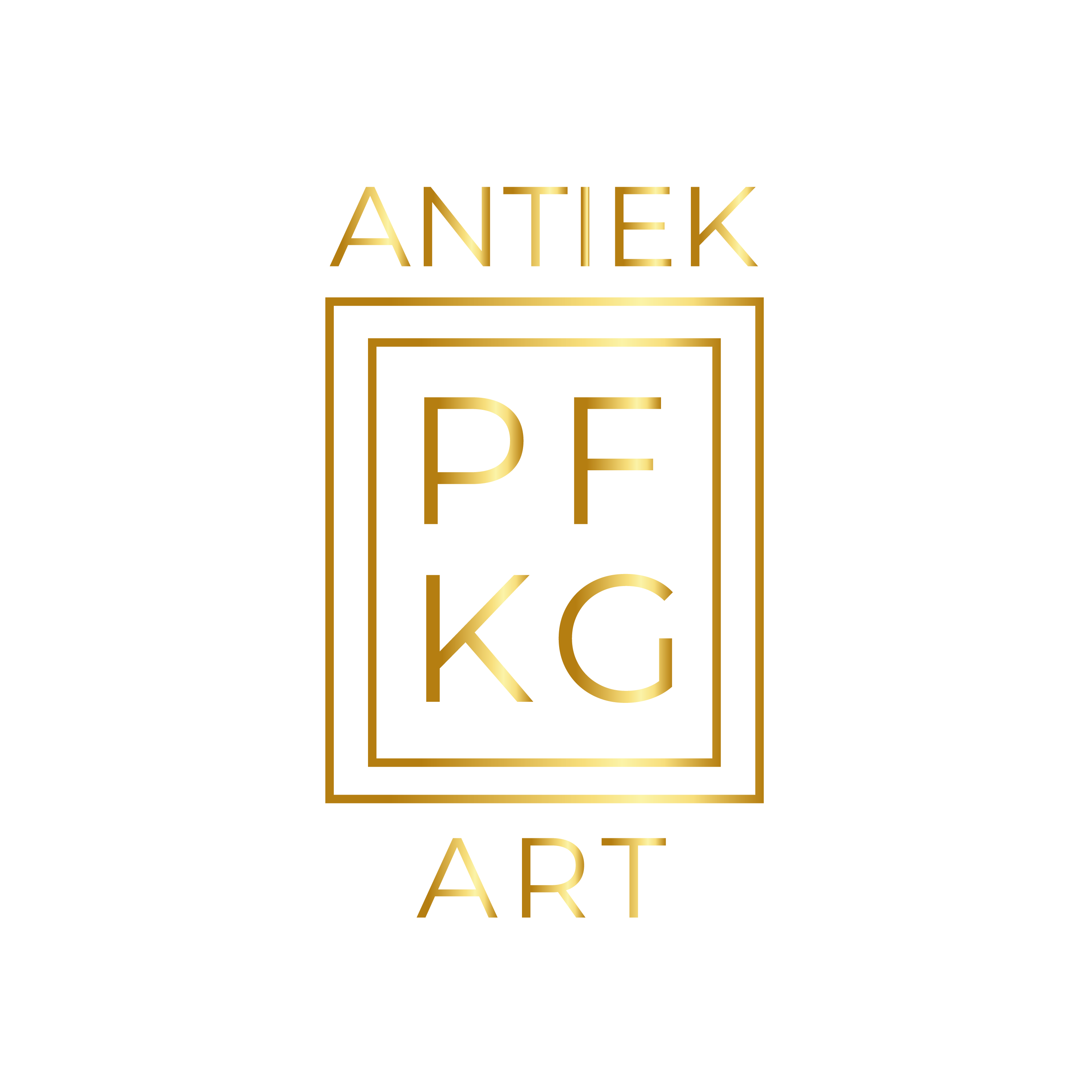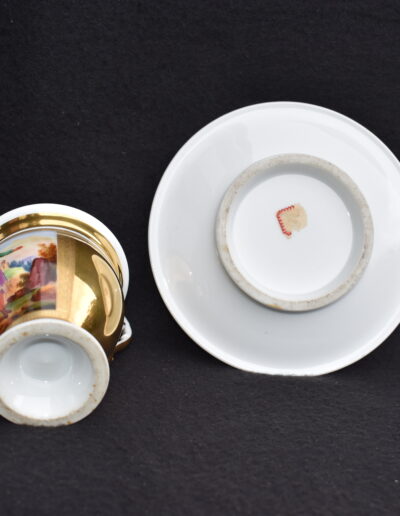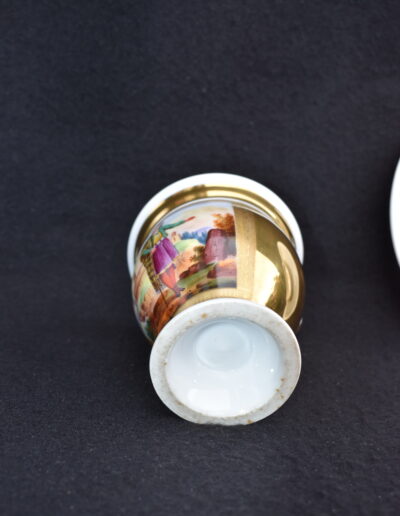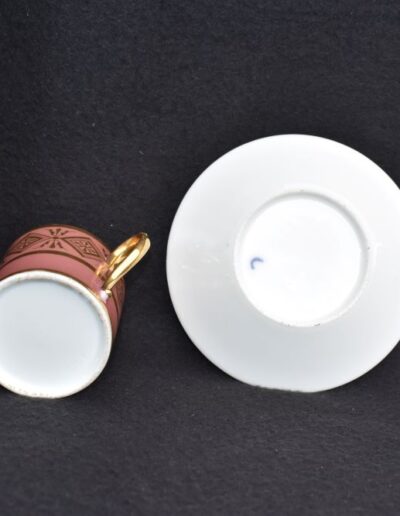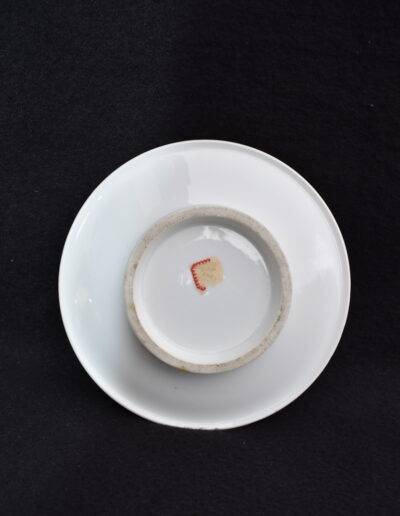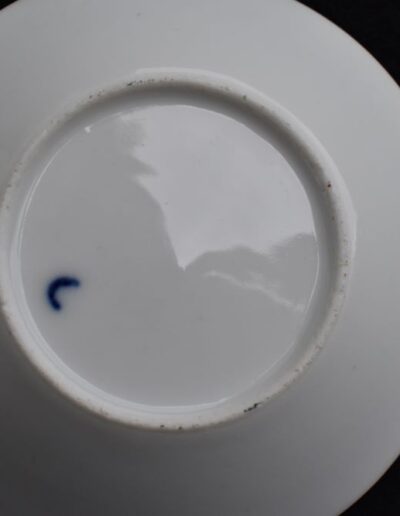Bow bag and bow bag, late 18th century.
Bag H 6.3 cm Ø top edge 6.2 cm Bottom bag Ø 13 cm H 2.5 cm
€ 190,00
Prijs incl. 6% BTW & Verzendingskosten
Meer informatie
The Bow porcelain factory (active c. 1747–64 and closed in 1776) was an emulative rival of the Chelsea porcelain factory in the manufacture of early soft-paste porcelain in Great Britain. The two London factories were the first in England.[1] It was originally located near Bow, in what is now the London Borough of Tower Hamlets, but by 1749 it had moved to “New Canton”, sited east of the River Lea, and then in Essex,[2] now in the London Borough or Newham. The earliest Bow porcelains are of soft-paste incorporating bone ash, forming a phosphatic body that was a precursor of bone china. Though Crowther continued in business in a small way, in 1776 what remained of the Bow factory was sold for a small sum to William Duesbury, and all the molds and implements were transferred to Derby: see Chelsea porcelain factory. We present a China porcelain tasse litron and deep underbag, made by the English manufacturer Bow in the third quarter of the 18th century. It has a typical Bow enamel color, namely crimson purple. The bag stands on a flat round base and extends into a concentric vertical body with a round edge. The corpus has a complete crimson-purple background with a gilded decor of geometric diamond-shaped motifs with stylized flowers in between. Two gilded concentric band-shaped friezes complete the decorum. The curled handle is completely gold plated. At the bottom there is a granular concentric foot ring with a collapsed center of milky white glaze containing a difficult to see pressed letter “w”? The round deep underbag has the same background and an identical geometric decor on the border. In the flat there are five concentric gilt bands on the identical ground. The edge also has a gold-plated band. At the bottom it stands on a granular flat base ring and is otherwise covered with a milky white glaze. In the center, an underglaze dark blue filled crescent moon is painted on the side as a mark. This mark was rarely used on Bow objects. Bag and underbag have a neoclassical aspect and date from the third quarter of the 18th century.
Condition: perfect.
